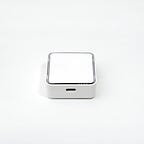Wearables & DTx: The New Frontier in Modern Healthcare
They are not only changing the way we live. They are changing the way we test ourselves.
After years of research and development, wearable tech and digital therapeutics (DTx) are gathering pace, building an ecosystem of advanced technology, the Internet, and connected devices to revolutionize our healthcare.
As one of the five major tech highlights at CES 2020 last month, as we repeatedly mentioned in our past articles, the digital health industry is booming. The Consumer Technology Association (CTA) says digital health and DTx device shipments are expected to grow 10% this year to more than 52 million units, with revenues expected to exceed US$12 billion by 2023.
Wearable technology and DTx will be expected to be the second-largest consumer electronics category by volume by 2023, second to smartphones.
Some names debuted at CES 2020 include Airthings, a device that allows users to check their home’s indoor air quality remotely, and IEVA, a smartwatch that can detect heart rate as well as environmental variants such as pollution, sun exposure, and noise levels.
As the solutions for acute health problems are slowly becoming obsolete, DTx will be a desperately needed solution to the medical problems of the 21st century — chronic diseases, which need constant intervention and lifestyle changes. Wearable DTx is ideally positioned to utilize all aspects of health tracking and can capture data in real-time, maximizing data logging and providing helpful insights as a result.
From a consumer perspective, wearable DTx can expand into the existing general health and fitness industry as seen with Apple Watch Health & ECG app, becoming increasingly bespoke as its device and its software learns its users’ habits using advanced IoT and artificial intelligence.
Wearable technology and DTx are not only making huge strides in terms of medical and fitness but are changing the way we train athletes, the military, and first responders. It’s changing the way we test ourselves.
Zephyr BioHarness, for example, is a wireless physiological monitoring system that can measure respiratory rate unobtrusively. Its performance system measures more than 20 biometrics and provides insights to help improve performance — be it sports, combat, emergencies, and research facility. This is a huge technological breakthrough in the amazing things wearable DTx can achieve and the future in terms of similar innovations and initiatives in this category across 2020 and beyond look promising.
PiCO GO Again
DTX is without a doubt the best investment for the future. We plan to launch PiCO GO this year, a revolutionary product that combines all the features and technology from PiCO Home, to herald our entry as a wearable digital therapeutics for pediatric asthma patients, into the medical market.
PiCO GO will take advantage of today’s modern technology to address the modern problems of our chronic healthcare epidemic. It will employ the latest technology, the Internet, AI, and a holistic approach to data analytics to treat and manage pediatric asthma patients. PiCO GO will have a high-capacity battery, a GPS, telecommunications module, and biometric sensors to read heart rates. As a wearable DTx, PiCO GO is proud to be part of this growing industry movement and will help millions of children.
To inquire more about Brilliant & Company, please do not hesitate to drop us a line:
- CEO / Ryan Yun / ryan.yun@brilcom.com
- Global Marketing Manager / Steve Tan / steve.tan@brilcom.com
